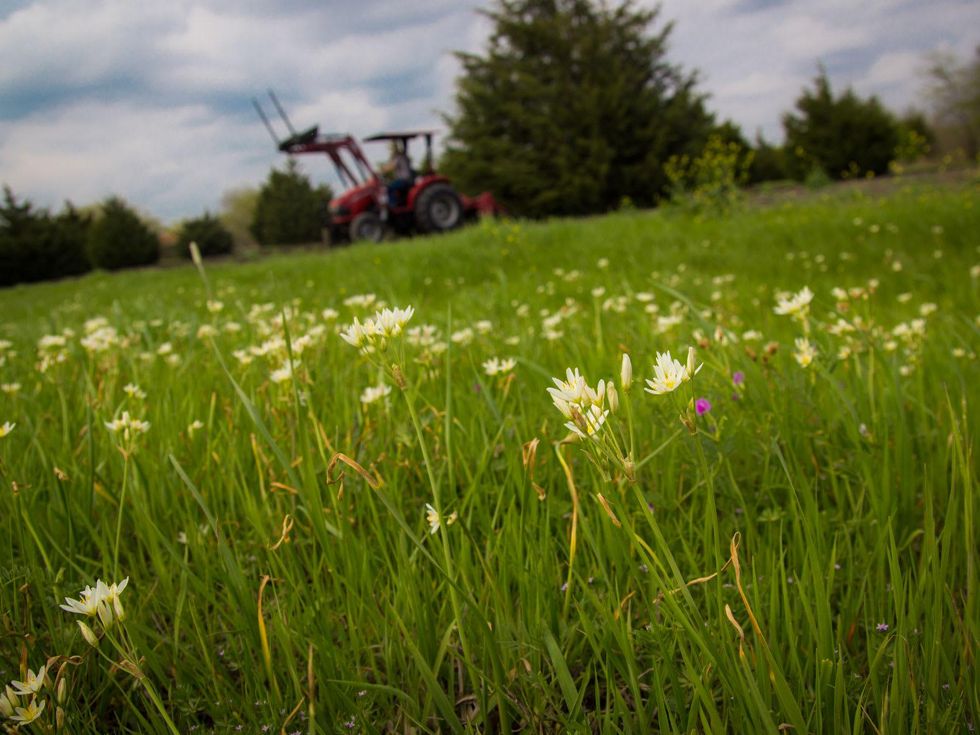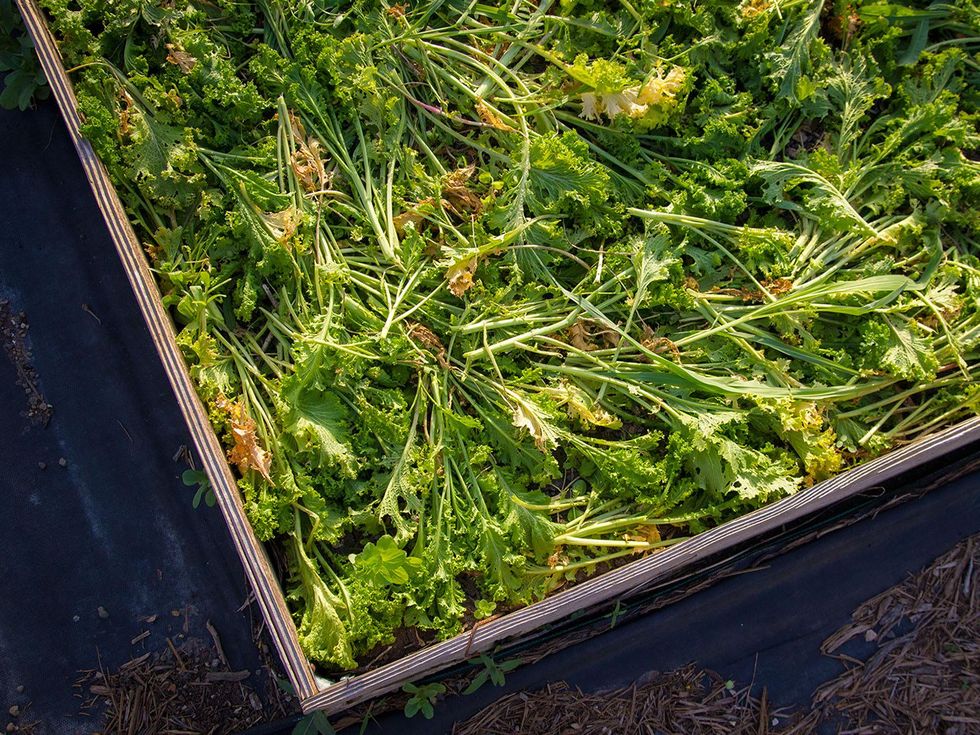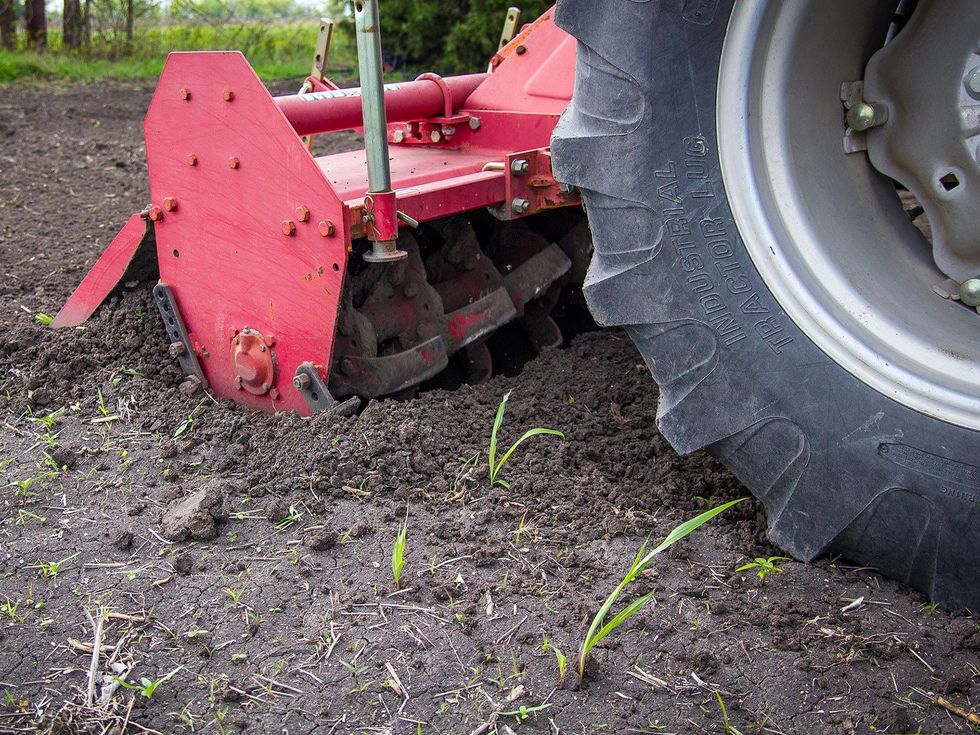The Farmer Diaries
Texas farmer scraps unsustainable practice to save precious soil
Hummingbirds have returned from their winter stay across the border, attracted by native Texas coral honeysuckle that began blooming just a few days before their arrival. Bluebonnets, Indian paintbrush and purple verbena are flowering; the sights of spring are everywhere. Growing season has begun.
The tilth of our soil is perfect. My father tilled last fall and again this spring, after the land had dried enough to be friable and easily worked. When freshly turned, soil is a clean slate that's uniform, level and weed-free.
Tilling removes competitive plants, makes the soil easy to dig into and breaks up the soil's surface tension so that water penetrates faster. After a good tilling, the land looks as if thousands of bags of potting soil have been opened up, dumped out across the land and smoothed out evenly.
Farmland that's tilled repeatedly, year after year for decades, eventually becomes infertile. That's if it hasn't eroded away first.
Tilling, plowing or some way turning under farmland has been a technique used by farmers for at least 10,000 years. It works well.
There's only one problem with tilling: It's unsustainable. Farmland that's tilled repeatedly, year after year for decades, eventually becomes infertile. That's if it hasn't eroded away first. Becoming aware of this fact has made me feel reluctant about my ambition to become a genuine farmer, not merely a man with a large garden.
Since childhood, I've had a feeling that whatever I do must build things up, not tear them down. But farming as it's always been done tears down the land and fouls the ecosystem, making it fit for little else than a Walmart parking lot or a housing addition.
Here's why:
Compaction. Running heavy machinery across the land, several times each year, compresses the soil so that the layers underneath the depth that's tilled become harder. Roots have trouble growing into such compacted land. Water and air can't reach far into it, and both are needed for healthy crops.
Disruption. Tilling the soil disrupts microbial colonies and nebulous webs of fungi that live below the surface of the soil. These turn inert materials into the compounds and elements plants need to live.
Without sufficient colonies of these other life forms, the soil is effectively sterile and can't produce healthy crops with adequate yields. If every spring and fall a tornado pulled the roofs off all the houses in Dallas, the population would dwindle into nothing. By ripping apart the surface of the soil by six inches, we disrupt the life below in about the same way.
Erosion. Tilled soil that's been rid of weeds is loose, ready to be taken wherever the rainwater flows and the wind blows. Natural processes can produce only about a millimeter of soil each century, but erosion can strip inches, possibly feet, of soil away in a single heavy storm. Even tilling itself causes this erosion as soil particles become wind-borne behind the plow and blow away.
Destruction. Plowing a field destroys the ground-nesting solitary bees and wasps that would have been useful pollinators for the crops. Because almost every insect spends part of its lifecycle in the soil, tilling also destroys beneficial insects such as caterpillar hunters (which do just as their name suggests), praying mantises, colonies of beneficial ants and earthworms. These tiny day laborers perform much-needed work on the farm, pollinating flowers, keeping pests under control or tending the soil below.
With no-till farming, instead of turning the soil upside down, you plant cover crops in the fall, mostly brassicas like mustard greens and kale.
As I've become aware of these issues, I've grown increasingly interested in what's called no-till farming, a technique that has the potential to park the plow for good, just by changing a few farming practices.
With no-till farming, instead of turning the soil upside down, you plant cover crops in the fall, mostly brassicas like mustard greens and kale. These crops grow dense all winter long and crowd out weeds. In late winter or early spring, you cut the crop at its base, so the plants fall over and create a green layer of plant material.
Seed is drilled into the soil, just underneath the cover crop mat that's been formed. As the mat decomposes, it releases nutrients into the soil where they either benefit plants directly or they are turned into plant-available nutrients by microbes. The mat also reduces evaporation, keeping the soil moister than if it were as bare as typical farmland. Weeds are kept in check too; the mat is an effective mulch.
As a cover crop is planted each fall and turned into a mat in the spring, no-till farming builds a deep layer of spongy, decaying plant matter. When the layer becomes deep enough for seed to be sown into it, the crop is effectively growing in compost, which beats plain soil any day. In this way, no-till farming adds to the viability of the farmland rather than tearing it down. Productivity increases each year; labor is reduced over time.
I began experimenting with the technique this year in my raised bed garden. A mustard green bed that I harvested from throughout last winter just this week started to bolt. So I cut down the dense growth of greens and scattered them out in the 4-by 8-foot frame. This bed was almost entirely weed-free, as the greens crowded out the grasses that normally take over in the winter.
I'll not turn this bed under this year, not even with a spade fork. Instead, I'll dig a hole for whatever plant I transplant into it, most likely tomatoes, and scoop out no more soil than I need to properly place the plant into the bed. This way, I'll keep disruption of the microbial life below the surface to a minimum.
For beds that didn't have a crop of greens growing in them, I use cardboard from discarded boxes as a layer to cover the soil. In either case, my goal will be to leave none of the soil's surface exposed to the sun or weed seed.
If this technique works on a small scale, I'll apply it to the acreage my father currently tills. Perhaps in a few seasons, we can turn our farm into an example of no-till farming and boost its productivity at the same time while laboring away much less.




